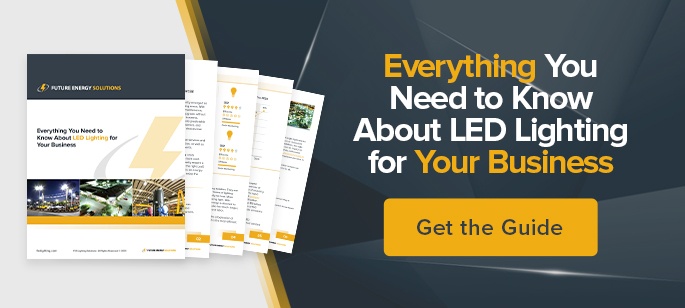Businesses in the U.S. spend more than $60 million annually on energy. Big brands and SMBs are looking at this line item for savings. Significant dollars be freed-up for critical expenses -- like talent, marketing, and useful technology. Sustainable and energy-efficient commercial buildings are also healthier for employees and customers.
The COVID-19 pandemic has put increased pressure on brands of all sizes to examine their energy-efficiency and find meaningful and straightforward ways to save and prosper.
The significant uses of energy in commercial buildings are:
- Lighting
- Refrigeration and HVAC
- Computers and Office Equipment
LEED (Leadership in Energy and Environmental Design) certification is the highest standard for energy efficiency and sustainability in commercial buildings. About 69K projects have achieved that status, and the trend is on the rise. However, even if your brand is not ready to take steps toward certification, you can adopt some of these features that save money and create a healthier and more sustainable business.
1. LED Lighting and Beyond
Lighting typically accounts for 8% or more of business’s annual energy expenses. That’s more than $4 billion in energy costs just to keep the lights on. Installing LED lighting is the simplest lowest-cost way to improve energy-efficiency. Bulbs last longer, and companies can save $200K a year (or more) in energy consumption.
Motion sensors are a vital component of energy-efficiency plans. The smartest brands have systems that control energy usage based on when people are using spaces. Dimmers and sensors are relatively inexpensive to buy and install and, when combined with a comprehensive LED lighting program, can deliver substantial savings.
The next generation of LED lighting will include smart bulbs. Facial recognition and connectivity to other devices will save energy and facilitate safety and communications.
2. Ways to Keep Cool, Comfortable, and Cost-Efficient
Commercial refrigeration is a huge industry -- $7 billion in revenue. Hospitality brands -- like hotels and restaurants -- are dependent on these systems to serve their customers and provide safe and healthy products. Today, more than 40K grocery stores and 153K convenience stores also invest in refrigerators and freezers. Even company cafeterias, schools, and municipal buildings have these systems. Energy-efficient, low-emission appliances can save as much as 25-30 percent in energy costs.
HVAC accounts for 40 to 60 percent of commercial energy consumption. Heating, ventilation, and cooling that includes split heat pumps and geothermal systems save businesses thousands -- if not millions -- of dollars. Daylighting (allowing natural light to heat buildings) is also an area that builders plan for. Sensors can be used for HVAC as well as lighting, and adjust temperatures based on traffic and space usage.
3. As Technology Grows, Energy Usage Can Shrink
We are living in a world where computers and other energy-powered devices are necessities. From the office workstation to complex server systems for global brands, machine drain power and expenses add up.
Laptops use up to 80 percent less energy than desktops. When buying new equipment, look to ENERGY STAR devices. Encourage employees to turn their computers off when they leave their workspaces.
Internet usage has grown exponentially. Data centers also contribute to energy usage. Companies like Google and Amazon have become more aware of the impact of their businesses on the planet and are looking for ways to offset the drain on the environment and energy use. Google provides resources for companies looking for ways to improve energy-efficiency, and Amazon has recently committed to sustainability efforts.
Evaluate Your Space from Floor to Ceiling
Whenever you invest in a new construction, expansion, or remodeling project for your business, consider every square foot of your company and its physical locations with an eye toward energy efficiency.
Starting with flooring selection, consider options that provide better insulation and result in less manufacturing waste. Major manufacturers like Mohawk offer environmentally-friendly alternatives.
Consult with architects and construction companies with expertise in sustainable building and consult with them on exterior and interior solutions. Attend events like this to learn about new developments in the green building industry -- especially as they relate to commercial structures and practices.
Look to resources that apply specifically to your industry. For example, restaurants can use this checklist to find energy-efficient ideas. Retailers can find inspiration in this guide.
Invest in the Long Game
Creating an energy-efficient business is not a “one and done” exercise. Whether you have a small operation or are involved in decision-making for a global brand, knowing your current energy usage is merely the first step.
Map out a plan for every location and for educating your employees about the costs of energy usage -- both hard costs and the impact on our environment.
Look to the smartest brands for expertise and inspiration. Track and measure energy savings over time and invest those dollars in growth. Then your business will ultimately be among those smartest -- and most energy-efficient -- brands.
Save thousands on energy usage -- without spending a dollar. Get your no-cost energy audit today.
Learn everything you need to know about LED lighting for your business.


%20(1).png?width=1080&height=1080&name=FES-Ebook-1%20(1)%20(1).png)